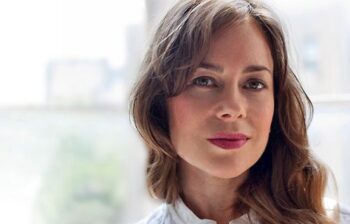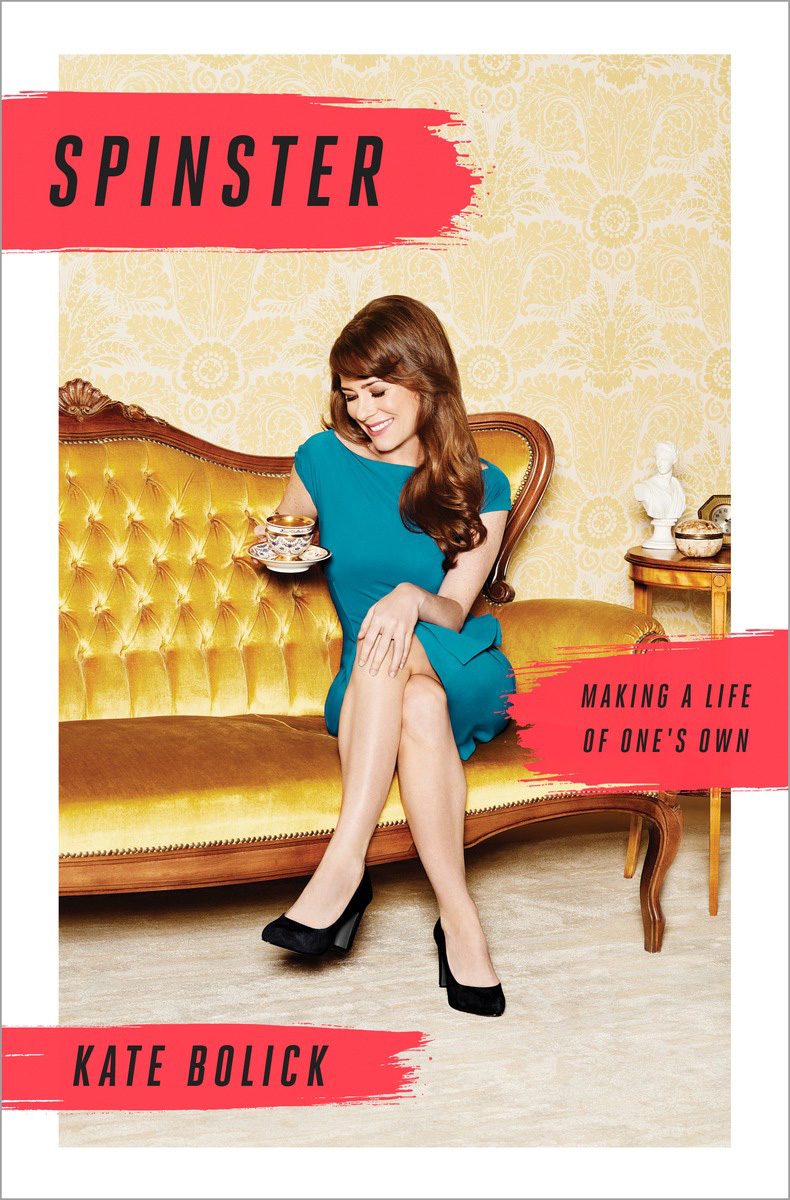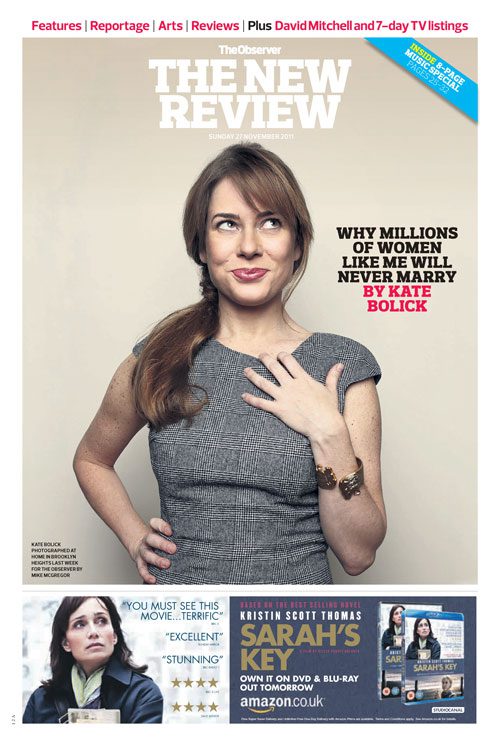
Kate Bolick’s recent book, Spinster: Making a Life of One’s Own, has caught fire in an unlikely way, defining the national conversation. A New York Times bestseller, this hybrid text straddles two forms—cultural essay and personal memoir—and addresses a pair of unavoidable questions: Whom to marry? And when? Even today, “these two questions define every woman’s existence,” writes Bolick, a contributing editor for the Atlantic who previously served as executive editor at Domino magazine, among other journalistic roles. Bolick’s consideration of these two questions proves to be unpredictable—and always insightful.
“I grant that a wholesale reclamation of the word spinster is a tall order,” writes Bolick. Her intent is to use the word as “shorthand for holding on to that in you which is independent and self-sufficient.” Like more than 100 million women in the United States, the author is not married, a result of personal choices she made while taking a carefully trodden path. With a few detours, she created herself as a writer while navigating relationships with friends, family, and the men in her life.
As she traces her biography in Spinster, Bolick also examines how this growing cohort of unmarried women is the result of historical shifts stretching back several hundred years. Spinster unpacks this historical, feminist process while introducing readers to Bolick’s literary “awakeners,” each one discovered at a key moment of the author’s life. These five 20th-century women bucked convention, living radically and on their own terms: poet Edna St. Vincent Millay, novelist Edith Wharton, columnist Neith Boyce, New Yorker essayist Maeve Brennan, and social visionary Charlotte Perkins Gilman.
***
The Rumpus: First, thank you for taking time out for The Rumpus, but especially for sharing Spinster with the world. This book is an enormous contribution to our culture and so intellectually and aesthetically rich. I found myself savoring every page and spending more time with it than expected—perhaps a bit like the way you savored reading the manuscript of your mother’s long-lost novel, toward the end of your narrative. Savoring life seems to be such an important theme in Spinster, a key to women making a life of their own. We see this in your anecdotes about making space and time to write, or even in brief images like the moment when you wake up in a storied Greenwich Village hotel where Maeve Brennan once lived, to marvel at the sight of Washington Square entirely dressed in snow. Do you think it’s impossible for married women with family obligations to savor life in these ways? Or just really hard? Put another way, is a self-sufficient spinster always an unmarried woman? Is marriage a bright-line boundary, beyond which you can’t really own yourself?
Kate Bolick: Speaking of savoring, oh how I am savoring your incredibly nice words about Spinster! Thank you so much. And yes absolutely, finding the time/space, and even the skill, to savor life, is a central, unspoken theme of the book—unspoken in that I found it difficult to write directly about the pleasures of being alone without coming off as obvious or smug, so I used the moments you highlight (and others, whether my own or those of the women I write about) as a way of telling that part of the story, indirectly.
Having never been married or had a child, I’m reluctant to speak to the experiences of those who have. What I can speak to is how being alone, without nuclear family obligations—I don’t even have pets, or plants!—is a very freeing way to live. I can take spontaneous trips out of town, or just spend all of a Sunday reading without interruption. Last night I had dinner at a friend’s place and afterward decided to sleep over so we could continue talking over breakfast in the morning. I relish these small freedoms. This combination of self-sufficiency and autonomy, and feeling great alone, is what “spinster” means to me.
All through my twenties and thirties I saw marriage as The End. The end of exploring, experimenting, learning. Compromising my own ambitions and desires for the sake of a relationship—say, marrying someone and then having to move somewhere because of his job—felt preposterous. I wanted and needed to learn how to be on my own. It was an intuitive thing, almost visceral. I had no idea it would take so long. I can’t claim to have reached some pinnacle of self-understanding, but I do know better now what I really want, and who I want to be around, and how to take care of myself, and reaching this stage has made commitment and intimacy less claustrophobic, less threatening. I see marriages where both people thrive as individuals—just a few marriages, but still—and it doesn’t look so bad.
But that’s just me, and as you know I have a very elastic and inclusive definition of the word “spinster.” There’s a school of thought that venerates the spinster as a more hardcore, independent figure, and that variety of spinster does, yes, own herself in a way many people never do.
Rumpus: Early in the book, you describe how the marriage question is central to women’s lives, adding, “men have their own problems; this isn’t one of them.” This is such a fascinating observation. On my first reading it occurred to me that straight men from, say, evangelical Christian or traditional Muslim communities might well feel pressure to get married early and for life—in an earnest way that might be pretty different from (for example) the New York lawyer who abruptly proposed to you after a short time dating, offering to buy you the brownstone, the country house, the whole gilded cage. Do you think the marriage question is really experienced so differently by men and women?
Bolick: Here’s the thing: Society is organized around the nuclear family, and therefore expects everyone to marry, male or female (and as of June, gay or straight, according to my friend Michael Cobb. Certainly the expectation to marry is much stronger for someone raised very conservatively, and who remains within that frame. Generally speaking, the difference as I see it is that even now, nearly a half-century after the sexual revolution, men tend to assume they’re active agents in the decision-making process, and can get away with not thinking about marriage too much until they feel ready to, whereas women are often fretting and worrying and “waiting to be asked”—that’s a gross generalization, sure, but one I see played out all around me. This has a great deal to do with the fact that men have biology on their side: if they want to have children, they can afford to wait much longer than women can to “settle down,” and that power differential is ever-present in the so-called marriage market. The rise of the choice mom is starting to flip this on its head.
Rumpus: Do you think it’s significant that your awakeners are writers so connected to New England and the Northeast? Have you been influenced by women writers from other regions? Or other identities?
Bolick: Isn’t that strange? I had no idea geography would play such a central role in the book until I wrote it. I’ve been influenced by women writers all over the map (both geographically and metaphorically), and lots of men, too, but at the end of the day, when I sat down to write, I saw that those writers who most influenced my personal history after my mother’s death were from places familiar to me.
Rumpus: I ask this because it seems that the spinster experience probably has a kaleidoscope of possible iterations. Do you think a working-class woman of color from Ferguson, Missouri, say, might gain a spinster identity like the one you’ve worked out? Or does the spinster experience of savored freedom and self-determination require a certain degree of privilege as a starting point?
Bolick: A “kaleidoscope of possible iterations” is a great way to put it. And without a doubt the story of the spinster is inseparable from economics. Historically, spinsters came from the middle and upper classes; the common 19th-century stereotype shows her as white, prissy, educated (think here of all the spinster schoolteachers and librarians). These were women who either worked and could afford to live alone, or who had families wealthy enough to support them; in return, they often served as caretakers for aging parents. When I looked at my own family tree I didn’t find a single spinster, which is when I realized those friends of mine with stories of eccentric spinster aunts were by and large people who come from money.
But unlike my ancestors, I was born into the middle class. I went to college and graduate school, entered a white-collar profession. Absolutely these advantages have made it easier for me to live on my own than a woman who is holding down two or three part-time hourly jobs. That doesn’t mean she can’t do it, though, or doesn’t. Arguably the most ferociously self-determined people are those who had to fight for it every step of the way.
Rumpus: An aspect of Spinster that is pretty distinctive is the way a sense of place imbues your life story. Whether it be your family home, or Edna St. Vincent Millay’s, in Newburyport; or all of New England itself—or places in New York City like Washington Square, with the image of you searching the depths of Bobst Library for Neith Boyce’s writings, even Brooklyn Heights, where you lived with your boyfriend—it’s almost like these places are actual characters in your life story. Was this an intentional aspect you wanted to portray as you wrote the book? A happy accident?
Bolick: It is so gratifying to hear that you read the book this way. I’d say it’s ninety percent happy accident. I’m someone who’s acutely sensitive to her physical environment; I think of my furniture as friends, and give them names! (Hello, Mr. Desk!) In fact, when I more or less finished researching and started writing the book, I realized I had to go home to Newburyport—that I couldn’t begin anywhere else, because that was my own beginning (and I have the fortune of returning to my actual childhood home, which is rare in this highly mobile age). Because my adulthood takes place in New York City, though, I knew the book would be located there, and I consciously decided to make Washington Square a central figure, to help anchor the reader. I guess because I’m so sensitive to space I don’t really like it when stories travel around too far.
Rumpus: The title of your final chapter is “Are Women People Yet?” Isn’t the very need to ask this question just devastating? Or is there a more optimistic vision of women’s lives emerging on the horizon? I read that chapter and thought of my two-year-old niece, who happens to be Zambian-American. I want all women to be people, by the time she grows up. Do you think that will be the case?
Bolick: Absolutely, asking that question is devastating! It’s madness! That’s why I asked it. And yet things are changing. Increasingly sophisticated assisted reproductive technologies and the rise of choice moms are turning age-old power differentials upside down. I meet young women who are leagues more liberated than I was at fifteen, eighteen, twenty—and yet I’m also hearing from women in their late twenties and thirties who are panicking about marriage. So I have no idea how this will all add up, or on what sort of timeline. But our nieces are definitely growing up in a world much different than the one I grew up in.
Rumpus: You seem to be a busy person at the heart of the Northeastern publishing nexus. Do you have time for your own writing now? Can you talk about any future books? After this one, you might have readers eager for more.
Bolick: I hope to write another book. For now, I’m just recovering from the publication of Spinster, basically, and doing some freelance writing, and planning my interview series at Edith Wharton’s house, The Mount, which will take place in September and October.
Rumpus: You share your ideas about five iconic awakeners. Do you think you’ll find more literary lights to guide you, as time passes? Whose work are you interested in right now?
Bolick: Absolutely. I am always falling in love. For the moment I’m just luxuriating in reading books without a purpose—making my way through the Elena Ferrante novels, and Nell Zink’s, closing in on the end of Deirdre Bair’s biography of Simone de Beauvoir, and dipping in and out of The Iliad. Next on my list are Oreo, by Fran Ross, and Mary Beard’s Laughter in Ancient Rome.







